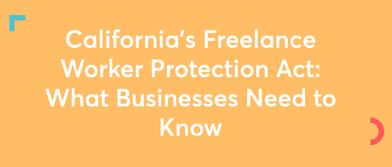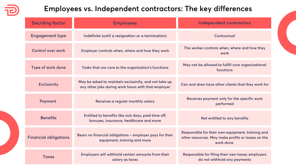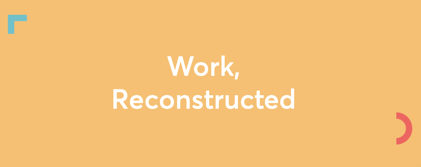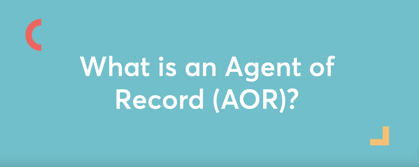How to protect your online content
- 10 Nov 2021
- 6 mins read
- Posted in
You create a great piece of content that you’re proud of – it provides useful information to your audience, and sets you apart as a thought leader in the industry. You publish the piece and it is extremely well-received. Perhaps, a little too well-received! A few days later, you get to know that your content has been plagiarized and replicated on a competitor’s website, who is now making profits off your efforts. Demotivating, isn’t it?
Of course, not publishing content is too drastic a solution to be considered. Unique content helps you address your consumers’ problems, spread awareness about the solutions that you are providing and establish yourself as an authority in the field. Good content is also an obvious way of getting your website ranked high on search engines and generating leads for your brand.
That’s why, when someone pirates your content, the fallouts are so devastating. Your leads (who may have become paying customers) are now redirected to other sites and sources. You also lose out on potential tracking, database building and monetizing opportunities. So how can you prevent this from happening? The truth is, anytime you put up content online, you run the risk of it being stolen or replicated. That said, there are things you can do to minimize these risks and protect your website content and other work online. Here are the top 10 solutions.
10 ways to protect content online
1. Know your rights
Equip yourself with information about what rights you have, how others can legally interact with your content, and what counts as infringement. This will let you operate fairly while also being able to identify any red flags that indicate content misuse.
For instance, if someone reviews your content or references it in their work, that does not count as misuse. In fact, even if someone uses your content in a ‘transformative’ way by presenting their unique take on your original material, that may not qualify as misuse either (provided they transform it enough). But if they use it without permission, claim it as their own work and profit from it, that likely infringes on your rights. The specific nuances of these rights differ from country to country, so a legal expert can help you understand when you have grounds to take action.
2. Register and display your copyright notice
Enforcing your rights and protecting your content become a lot easier if you have your copyright registered. As a creator of original content, this should be fairly easy – in most countries, you already have rights over your work and it’s just a matter of filling out the relevant paperwork. Your legal expert should be able to tell you how to secure a copyright.
Once the process is completed, you can display your copyright notice on your website. This includes the copyright symbol, followed by the year and your brand’s name. A longer notice would also state your ownership and outline what will be construed as misuse. This will not prevent people from copying your work – but it will act as a deterrent and give you the power to enforce your rights if needed.
3. Set up Google Alerts
While some content creators scan the internet manually every day, others get to know about unauthorized use of their content when a friend stumbles upon their work on someone else’s website. However, these methods cannot possibly detect every instance of misuse.
Setting up a Google Alert is a smart way to ensure that you get notified whenever your content pops up online. Set the alert by putting in specific details – your brand name, the title of your blog or any notably relevant phrases you may have used. Generic search terms will only trigger an unnecessary volley of notifications.
4. Use monitoring tools
For a more refined process, try some of the many reverse search tools and plugins available today. Copyscape, for instance, allows you to search by URL or by segments of your text – and the premium versions also conduct regular scans, notifying you when your content is detected on other sites. As a bonus, it is also a great plagiarism checker for your own content, before you hit publish. TinEye is a good equivalent reverse search tool for images. In addition to these, most blog platforms also have trackback notifications that serve a similar purpose.
5. Protect data at your organisation's end
This is particularly important if you work with freelancers, contractors and external workers. While your ownership over the content may be established, there’s still much scope for misunderstanding that a lot of businesses unfortunately, do not address. For example, can your freelancers use the content they create for you as samples of their work as they look for new job opportunities? Are they allowed to publish it in their portfolios? A freelance contract and an NDA can outline the rights of both parties, minimize unintentional breaches and protect your data.
Always be careful about the way you share information with your external workers. To enable them to create relevant content, you may need to share survey findings, internal information and other data – and if you do not have a streamlined process for doing so, you run the risk of having all that sensitive information scattered across various freelancers’ inboxes and chat apps. This increases the chance of your data being compromised, copied and used unethically.
6. Use watermarks
If you publish images and videos, a watermark is a great way to protect your brand’s rights. This transparent symbol will display your brand name on your work, thus ensuring that you are credited as the rightful owner, even if someone shares it without your knowing. Most brands like to use a variation of their logo or name, but you can use WordPress plugins like Envira Gallery or tools like Watermarkly to customize a watermark and add it to your photos in bulk.
While this step is easy enough, do ensure that it doesn’t prove counter-productive. A large, obtrusive watermark looks unsightly, and may prevent your own audience from appreciating your photos and videos – a discreet, well-placed watermark is just as effective.
7. Disable options to copy your content
Another great way to protect your website content from being replicated is to prevent people from copying it in the first place. Certain codes used on your website or in WordPress can help you disable the right click option, thus preventing someone from being able to save your images. For written content, most people would either select the text and copy it or use the Copy-Paste hotkeys. You can incorporate codes to disable both these options.
Any online guide will show you how to protect your website content from being copied, but if you’re looking for something simpler, WordPress plugins like Content Protector Pro or WP Content Copy Protection Pro are both good options.
8. Authorize sharing of your content in some instances
While you don’t want unauthorized usage of your content, it’s not a good idea to discourage people from sharing your work altogether. A loyal community of followers who share your content on their pages can be a fantastic way to amplify your reach and grow your brand.
To do this right, you will need to ensure that the shared content always leads back to your website or social media pages. One easy way to do this is to be upfront and vocal about how you would like to be credited when someone shares your work. You can also embed particular codes that would enable people to share directly from your website. For instance, add a ‘Click To Tweet’ button after quotable lines and informative sections in your blogs. Adding watermarks to your social media content ensures that viewers can see your brand account as the source, even if your content is re shared multiple times.
9. Restrict access
If you regularly publish effort-intensive content (like surveys, whitepapers and eBooks), it might be a good idea to restrict access to them. You can set up a member dashboard or integrate a paywall so that only those who are genuinely interested in the content will be able to view it. This is recommended only for work that is interest-specific and difficult to produce – you would certainly not want to limit access to top-of-the-funnel content that is meant to attract new followers or get more viewers to your page.
For images and photos, avoid putting up higher-resolution files on your website and social media pages. This should make them perfectly suitable to be viewed online, but would make them useless if someone wanted to print them out.
10. Take appropriate action
Often, unauthorized usage may simply occur when someone mindlessly shares your content and forgets to credit you or doesn’t realize the implications of sharing your work. In those instances, a firm but polite message should be sufficient to get them to rectify their faux pas.
However, sometimes the misuse may be intentional and the person or brand in question may refuse to engage with you. This is where that copyright registration comes in handy. You may be able to file a notice under the Digital Millennium Copyright Act (DMCA) or its equivalent, which would prompt the offender to take down your content from their website. In case you stumble upon your work being sold without your permission on online marketplaces, you can report it to the relevant marketplace authorities to have that user blocked.
Data protection: A balanced approach
When you work hard on producing unique and engaging content, it’s easy to get pre-occupied with ensuring that it doesn’t get pirated or stolen. However, it is important to take a balanced approach to content protection. Automate as much of the monitoring process as you can, have the correct tools in place to protect it at your end, and then put your focus back where it matters – on creating all that great content.
Here at TalentDesk, we value how important it is to keep your data protected. Our streamlined onboarding process enables you to ensure that all your freelancers and contractors know the data rights, before you begin the engagement. It also ensures that all the contracts, NDAs and other documentation are completed and stored in an organized way in the cloud. In addition, our secure communication platform is a fabulous way to share sensitive information with all your team members, so that you don’t worry about potential leaks from various mailboxes and apps.
A combination of all these tips and our robust solutions let you rest assured that your content is as safe as it can be.

Sanhita Mukherjee
Tags
Speak to us to find out how we can help you pay your contractors more efficiently
Related articles

What is a Contractor Of Record (COR)?
Discover the role of a Contractor of Record (COR) – Learn how a COR streamlines contractor compliance and safeguards your business legally.

California’s Freelance Worker Protection Act: What Businesses Need to Know
Learn how California’s Freelance Worker Protection Act (FWPA) impacts your business with compliance requirements, payment rules, and penalties.

The Hidden Complexities of Independent Contractor Classification
Read the complexities of independent contractor classification in our guide. Stay ahead with expert insights into evolving rules, tools, and future trends.

What are Global Payroll Providers: Understanding Payroll Systems
Explore the essentials of international global payroll, how it supports multinational operations, compliance, and simplifies payroll global processing.

How To Avoid Employee Misclassification
Avoid costly errors by learning about employee misclassification risks, legal ramifications and compliance strategies when classifying your workers.

Work, Reconstructed
Xenios Thrasyvoulou and Glen Hodgson discusses the main compliance issues that are faced today within the talent and HR sectors.

What is an Agent of Record (AOR)?
Read about the essential role of an Agent of Record (AOR) in representing freelancers and contractors globally, ensuring compliance and smooth operations.

Differences Between W9 and W8 Tax Forms
Unravel the purposes of W-8 and W-9 tax forms, download them, understand when and how to use them, and navigate the complexities of US tax compliance effectively.
How to pay 1099 employees
How to pay 1099 employees
Navigate 1099 employee payments and paying 1099 employees with ease. Learn how to ensure timely, compliant compensation for your contractor workforce. ‘

PEO vs. EOR: What's the difference?
Though similar, PEOs and EORs have key differences. Learn the distinctions and find out which is right for your business.
